Prime Minister Narendra Modi in his address to the nation on Monday mentioned a slew of unsung heroes of India’s freedom movement. Modi said tribal freedom fighters like Birsa Munda kept the struggle for independence alive in every corner of the country. “Tribal freedom fighters such as Birsa Munda, Tirot Sing and Alluri Sitarama Raju played a pivotal role in keeping the freedom struggle alive in every corner of India,” he said. Modi’s remarks came after President Droupadi Murmu recently become the first tribal to hold the top constitutional post in the country. Saluting the strength of Indian women, Modi, mentioning Jhalkaribai, Rani Chennamma and Begum Hazrat Mahal, said that “every Indian is filled with pride when they remember the strength of the women of India.” Underlining that India is “the mother of democracy”, Modi said the country’s inherent strength comes from its diversity and the common thread of patriotism, and is unshakeable. The path to India’s Independence on 15 August, 1947, was a long one and involved contributions and sacrifices from many men and women. Let’s take a closer look at some of the unsung heroes of the freedom movement Modi mentioned and their role in Independence: Birsa Munda Birsa Munda was a freedom fighter and a revered tribal leader who challenged British rule and is credited with mobilising tribals against the empire. Munda forced the colonial rulers to introduce laws protecting the land rights of the tribals. He spearheaded the tribal Millenarian movement that arose in the erstwhile Bengal Presidency comprising western districts of Bengal, Bihar and Odisha. [caption id=“attachment_11059021” align=“alignnone” width=“640”] 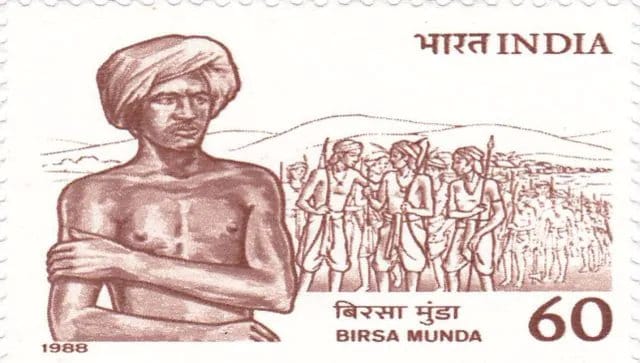 Birsa Munda on a 1988 stamp of India. Image Courtesy: India Post[/caption] Munda was born on 15 November, 1875, in Chhotanagpur plateau of present-day Jharkhand. He had organised his first protest march for remission of forest dues during the great famine of 1895. He also coined the slogan,‘Abua raj seter jana, maharani raj tundu jana’ which means ‘End the kingdom of the queen, create our kingdom’. Other than his fight for freedom and rights of the tribals, Birsa also founded a new religion called Birsait.
The founding of the new religion was in response to the large-scale conversion by the missionaries.
Birsait taught people to believe in one God. Birsait soon became the popular religion among the Mundas and Oraons. Nicknamed ‘Dharti Abba’ or Father of the Earth, Munda encouraged his followers to get back to their tribal roots and follow their traditions. Munda in his very short life, mobilised the tribal community, rebelled against forced conversions, envisioned a fairer, more just society and died fighting for it. The prominent tribal leader was arrested on 3 March, 1900, while sleeping with his guerrilla army at Jamkopai forest in Chakradharpur. He died in British custody at Ranchi jail on 9 June that year at the tender age of 25. On 15 November, 2000, on the occasion of Munda’s 125th birth anniversary, the then prime minister Atal Bihari Vajpayee created the state of Jharkhand, carving it out from the southern districts of Bihar. In November 2021, his grandson Sukhram Munda inaugurated Aadi Mahotsav, a national festival to showcase tribal art, culture and cuisine, at Dilli Haat. Launched in 2017, Aadi Mahotsav is an attempt to familiarise people with the rich and diverse craft, culture of tribal communities across the country. The government decided to celebrate ‘Janjatiya Gaurav Divas’ on 15 November to mark Birsa’s birth anniversary of the revered tribal leader and to remember the contribution of tribal freedom fighters. Jhalkaribai Born 22 November, 1830 to Suba Singh and Jamuna Devi, Jhalkaribai was an adviser to the famous Rani Lakshmibai of Jhansi and fought alongside her in the 1857 rebellion. As per The Statesman, Jhalkaribai was born to a Dalit family and not allowed to go to school due to her background. Her father instead tutored her to ride horses and to fight. [caption id=“attachment_11059041” align=“alignnone” width=“640”] 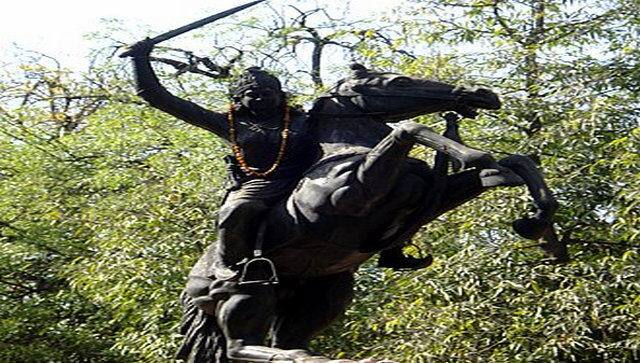 Statue of Jhalkaribai at Gwalior, Madhya Pradesh. Wikimedia Commons[/caption] She played a vital role in planning and strategising the first war of Independence in 1857. As per The Statesman, stories about how she once single-handedly repelled dacoits attacking her village and killed a tiger with an axe are famous in and outside Jhansi. Jhalkaribai is said to have been married to a soldier in the Jhansi Army. Spotted by Laxmibai during a festival at Jhansi fort, she is said to have born an uncanny resemblance to the queen. Lakshmibai, on hearing tales of Jhalkaribai’s bravery, quickly brought her into the fold of the women’s wing of her army and gave her further tutoring in warfare. In 1858, when Field Marshal Hugh Henry Rose attacked Jhansi to finish off the revolt, Lakshmibai was betrayed by one of her commanders. Advised by her commanders to flee, Lakshmibai quietly slipped away from Jhansi on horseback. As per The Logical Indian, Jhalkaribai then hatched a ploy to better Lakshmibai’s chances of escape. Disguising herself as the queen, she returned to the battlefield and rode into Rose’s camp.
Her deception was only uncovered a day later when a man named Dulha Joo identified her, as per the report.
There seems to be some confusion about her death with some saying she passed away in 1958 and others claiming she was set free and passed away in 1890. There is a statue of Jhalkaribai in Gwalior and the Indian government in 2001 released a stamp commemorating her. Tirot Sing U Tirot Sing, the tribal Khasi chief of Nongkhlaw Kingdom or the Nongkhlaw state of the pre-Independence era, was the first tribal Khasi ruler to rebel against the British empire in 1829. [caption id=“attachment_11059051” align=“alignnone” width=“640”] 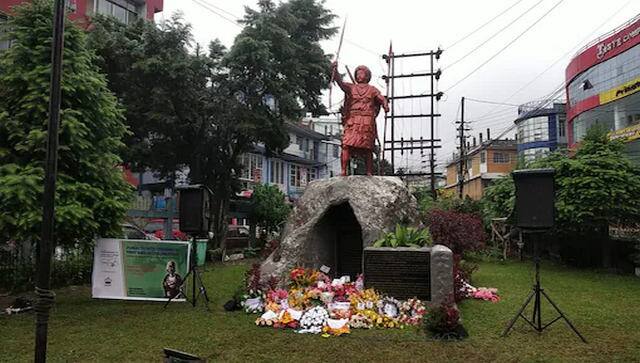 U Tirot Sing Syiem took on the might of the British and sacrificed his life defending the freedom of his territory. News18[/caption] Sing kicked off the revolt against the British on 4 April that year after they attempted to take over control of the Khasi Hills. U Tirot Sing just one of the prominent freedom fighters in Meghalaya whose legendary battles against the British do not find a mention in curriculum. The British and Tirot Sing initially reached an agreement – permission for the road project between Guwahati and Sylhet in lieu of regaining possession of the duars (passes into Assam). However, Balaram Singh, Raja of Ranee, disputed Tirot Sing’s claims to the duars, and went ahead with a party of armed men to establish his claim. When news came that the British were reinforcing forces in Assam, Tirot Sing convened a durbar again and ordered the British to evacuate Nongkhlaw. When the British did not pay any heed, the Khasis attacked their garrison in Nongkhlaw. The Khasis lacked firearms and had only swords, shields, bows and arrows with which to fight the Anglo-Khasi War.
They thus employed guerrilla tactics and dragged out the war for four years.
As per North East Now, Sing fought with only a sword and shield, was shot at by the British and had to hide in a cave. He was captured by the British on 13 January, 1833, after one of his chiefs betrayed him for gold, as per the report. He was deported to Dacca (now Dhaka) where he died on 17 July, 1835. His death anniversary is commemorated every year as a state holiday in Meghalaya. Alluri Sitarama Raju Sitarama Raju, also referred to by his surname Alluri, was born on 4 July, 1897, at Pandrangi village in the then Visakhapatnam district. He is revered across Andhra Pradesh, Telangana, Odisha and Karnataka as “Manyam Veerudu” or the “hero of the jungle” and is a household name in these states. [caption id=“attachment_11059071” align=“alignnone” width=“640”] 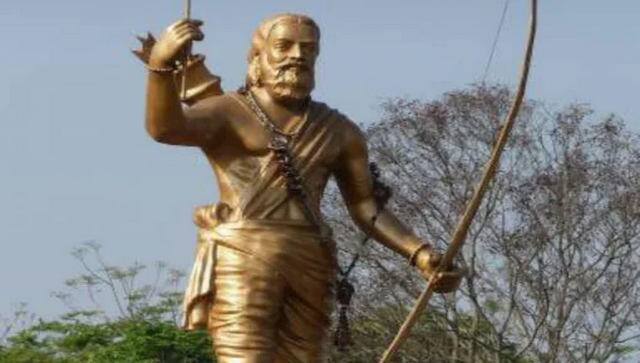 Prime Minister Narendra Modi unveiled the 30-feet tall bronze statue of Alluri Sitarama Raju on his 125th birth anniversary in Andhra Pradesh. Image courtesy: @VPSecretariat[/caption] According to history, the regular patriotic discourse during the freedom struggle had a strong influence on Alluri since his childhood. Following the death of his father, his schooling got disrupted and he went on a pilgrimage and toured the western, northwestern, north and northeastern India during his teens. The socio-economic conditions in the country under the British regime, particularly in the tribal areas, deeply moved him. During those journeys, he met revolutionaries in Chittagong (now in Bangladesh). Alluri then made up his mind to build a movement against the British. He organised the local Adivasis in the forest areas along Visakhapatnam and East Godavari districts into a potent force to launch a frontal attack. Thus was born the Rampa Rebellion’ or the Manyam Uprising’, in the Rampachodavaram forest area in the erstwhile East Godavari district, which rattled the mighty British forces. Using the Adivasis’ traditional weapons, bows and arrows and spears, Alluri spearheaded many an attack on the British forces and became a thorn in their flesh. He, however, realised that traditional weaponry was no match against the heavily armed British forces and, hence, planned to snatch the enemy’s own weapons. The famed attack on the Chintapalli police station on 22 August, 1922, with over 300 revolutionaries was the first in the series, which ended in a haul of firearms. The sheer audacity of Alluri in warning, in advance, the police of the date and time of the attack left the British stunned. He enlisted the booty and signed the station diary after the attack, making it his hallmark. He led similar attacks later on Krishnadevi Peta and Raja Ommangi police stations. The revolutionaries under Alluri’s leadership snatched weapons and armoury in all such attacks. A large contingent of Reserve Police personnel from Visakhapatnam, Rajahmundry, Parvatipuram and Koraput was rushed to these areas led by British officers and, in the skirmish that ensued, two Scot and Heiter were killed by the revolutionaries on 24 September, 1922, and several others wounded. The Agency Commissioner J R Higgins announced a prize of Rs 10,000 on Alluri’s head and Rs 1,000 each on his close lieutenants Gantam Dora and Mallu Dora. The British deployed hundreds of soldiers from Malabar Special Police and the Assam Rifles, led by top officers, to crush the movement. Alluri won the grudging admiration of the British as a formidable guerrilla tactician. Unable to contain the Manyam’ uprising, the British government deputed T G Rutherford as the new Commissioner in April 1924 to quell the movement. Rutherford resorted to violence and torture to know the whereabouts of Alluri and his key followers. It was a relentless chase by the British forces that cost them an overall Rs 40 lakh. Unable to stand the brutal repression against the tribals, Alluri finally gave himself up and was martyred on 7 May, 1924.
He lived only for 27 years, but close to a century after his martyrdom, the Telugus continue to revere and worship Alluri.
In July, Prime Minister Narendra Modi unveiled a 30-foot bronze statue of the legendary freedom fighter on the latter’s 125th birth anniversary. The 15-tonne statue was carved out at a cost of Rs 3 crore and installed by the Kshatriya Seva Samiti in the Municipal Park at ASR Nagar in Bhimavaram, as part of the Azadi Ka Amrit Mahotsav celebrations. Former chief minister N Chandrababu Naidu wrote a letter to Prime Minister Modi requesting that a statue of Alluri be installed in Parliament. Naidu recalled that a decision to install Alluri’s statue in Parliament was taken by the then NDA government led by Atal Bihari Vajpayee but was not implemented due to change of government. “It will now be apt to install the legendary freedom fighter’s statue in Parliament in his 125th year of birth,” he added. Rani Chennamma of Kittur Rani Chennamma, a 19th Century queen of Kittur in Belagavi district, led an armed rebellion against the British. Chennamma was born in Kakati, a small village in today’s Belagavi district of Karnataka. She became queen of Kitturu (now in Karnataka) when she married Raja Mallasarja of the Desai family. They had one son who died in 1824. After the death of her son, she adopted another child, Shivalingappa, and made him heir to the throne. However, the British East India Company did not accept this under the Doctrine of Lapse, a policy of annexation devised by the British East India Company. [caption id=“attachment_11059081” align=“alignnone” width=“640”] 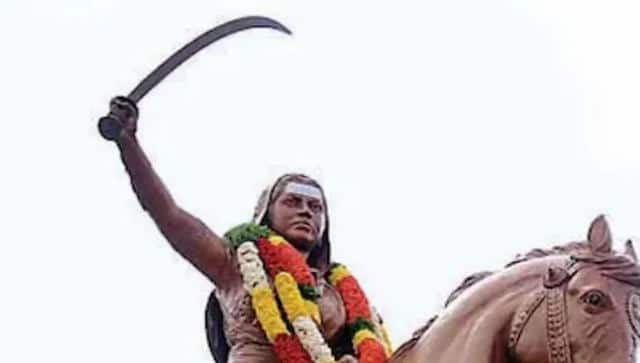 On October 22 every year, the Karnataka government celebrates Kittur Utsava as mark of respect to the great warrior queen Rani Chennamma. News18[/caption] In February, Karnataka chief minister Basavaraj Bommai, on the 350th anniversary of her coronation, announced that his government has decided to develop infrastructure in Keladi and all other surrounding areas and called it a fitting tribute to the staunch leader. According to the doctrine, any princely state or territory under the paramountcy (direct influence) of the British East India Company as a “vassal” under the British subsidiary system, would automatically be annexed if the ruler was either “manifestly incompetent or died without a male heir”.
This doctrine rejected the long-established right of an Indian ruler without an heir to choose a successor.
Impact Shorts
More ShortsThe princely state of Kitturu was taken over by the British East India Company in 1824 by imposing the ‘doctrine of lapse’, even before it was officially articulated by Lord Dalhousie, Governor General for the British East India Company, between 1848 and 1856. It was probably the first instance of its application. Lord Dalhousie merely made it official in 1848 by documenting it officially. Dalhousie’s annexations and the doctrine of lapse caused great anger among the ruling princes in India, making it one of the causes of the Indian Mutiny of 1857. The British ordered Rani Chennamma to exile the adopted child Shivalingappa, using the policy of paramountcy and complete authority. But Chennamma defied the order. Rani Chennamma sent a letter to Lord Elphinstone, Lieutenant-Governor of Bombay Presidency, to plead the cause of Kitturu, but her request was turned down, and war broke out. The British tried to confiscate the treasures and jewels of Kitturu, valued at around Rs. 1.5 million, but in vain. With a force of 20,000 men and 400 guns, mainly from the third troop of Madras Native Horse Artillery, they attacked Kitturu. In the first battle on October 1824, British forces lost heavily and the Collector and political agent, St. John Thackeray, was killed by the Kitturu forces. Amatur Balappa, Chennamma’s lieutenant, was responsible for his death and the losses to the British forces. Two British officers, Sir Walter Elliot and Stevenson, were also taken as hostages. Rani Chennamma released them after a promise from the British that the war would end. But the British cheated her and re-started the war. This time, the British officer Chaplin actually continued the war with more forces. Munro, nephew of Sir Thomas Munro and sub-collector of Solapur, was killed. Rani Chennamma fought fiercely with the help of her lieutenants, Sangolli Rayanna and Gurusiddappa, but was outnumbered and ultimately captured and imprisoned at Bailhongal Fort, where she died on 21 February, 1829. Chennamma’s first victory and her legacy are still commemorated annually in Kitturu, during the Kitturu Utsava held from 22–24 October. Her remains are buried in Bailhongal taluk. Her samadhi is situated in a small park maintained by the government. In February, the ministry of civil aviation at Chennai airport paid homage to Kittur Rani Chennamma on her death anniversary, calling her an unsung hero. In October, the Bengaluru City Police formed the ‘Rani Channamma Pade’, a special wing of women police officers to keep tab on crimes against women and children and spread awareness among them. This elite grouping was the brainchild of DCP (South-East Division), Bengaluru City Police, Shrinath Mahadev Joshi. On 11 September 2007, a statue of Rani Chennamma of Kitturu was unveiled at the Parliament complex in New Delhi by India’s first woman president Pratibha Devisingh Patil.
The statue was donated by the Kittur Rani Chennamma Memorial Committee and sculpted by Vijay Gaur.
On October 22 every year, the Karnataka government celebrates Kittur Utsava as mark of respect to the great warrior queen. Begum Hazrat Mahal Begum Hazrat Mahal was an icon of the 1857 rebellion who fought against the British East India Company. The wife of ruler of Awadh Nawab Wajid Ali Shah, Begum refused to accept any kind of favours and allowances offered by the British. Begum fiercely fought the British East India Company with the help of her commander Raja Jailal Singh. [caption id=“attachment_11059091” align=“alignnone” width=“640”] 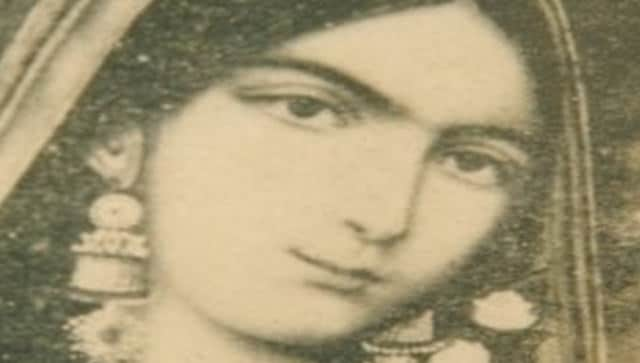 File image of Begum Hazrat Mahal. Wikimedia Commons[/caption] Mahal was born Muhammadi Khanum in 1830 at Uttar Pradesh’s Faizabad. Her father is Gulam Hussain. She showed a good grasp of literature at a young age. Her rebellion was ignited by the demolition of temples and mosques by the East India Company to make way for roads. In 1856, when Awadh was annexed by the British East India Company and her husband, the last Nawab of Awadh sent into exile to Calcutta, the Begum decided to stay back in Lucknow along with her son Birjis Qadir.
As per Siasat.com, the unhappy natives declared rebellion against the British under her leadership.
Meeting at Chavani area of Lucknow, the capital of Awadh on 31 May, 1857, they declared independence and wiped the British out of Lucknow. Begum Hazrat Mahal declared her son Birjis Khadir as the Nawab of Awadh on 7 July, 1857. As the Nawab’s mother, she raised 1,80,000 troops and spent a huge amount of money renovating the Lucknow fort. Established a high-level committee for the good governance, she ruled on behalf of her son for ten months. On 31 December, 1858, she challenging the proclamation issued by Queen Victoria, as per the report. When the forces under the command of the British re-captured Lucknow and most of Awadh, she was forced to retreat. She then took refuge in Kathmandu along with 10-year-old Qadr and some other loyal supporters. She died there on 7 April, 1879. Her tomb is situated on the premises of Jame Masjid in the heart of Nepal’s capital. A “Begum Hazrat Mahal National Scholarship” for meritorious girls belonging to the minority communities – earlier known as “Maulana Azad National Scholarship for Meritorious Girls belonging Minorities” – was in 2003 launched by the then Prime Minister of India Atal Bihari Vajpayee . With inputs from agencies Read all the Latest News , Trending News , Cricket News , Bollywood News , India News and Entertainment News here. Follow us on Facebook, Twitter and Instagram.


)

)
)
)
)
)
)
)
)



